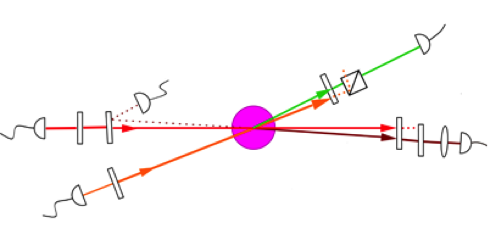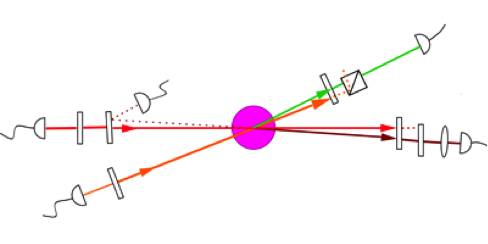Photonic Matchmaking
Entangled pairs of photons are the sine qua non of optical schemes for quantum information processing, so researchers are always on the lookout for efficient and practical ways of creating them. Typically, photons travel into a nonlinear crystal that converts one photon into two with the same energy when added together, a process called parametric down-conversion. But this method has drawbacks, and in a paper in Physical Review Letters, Bharath Srivathsan and colleagues at the National University of Singapore report a technique for photon pair production that overcomes some of the more serious limitations.
A major problem with using nonlinear crystals is that, because the down-conversion process does not rely on a resonance, many pairs of photons with the same total energy can emerge, causing the output energy to be spread over a large bandwidth. If the photons then need to enter quantum elements like atoms, this broad-spectrum output must be filtered to match the much narrower linewidths of atomic energy levels. This means that many photons may go to waste.
Srivathsan et al. use a different nonlinear optical process called four-wave mixing: two pump photons excite a vapor of rubidium atoms so that two new photons can be emitted. The mixing is coherent so the new photons emerge in beams with well-defined direction and frequency, which means they can be directed into optical fibers or other devices. And because the wavelengths can be tuned near a resonance, the photon generation can be efficient. This makes the four-wave mixing photon source useful for “heralded” interactions, where one photon announces the presence of another, or for quantum memories and repeaters in communication networks. – David Voss





